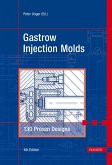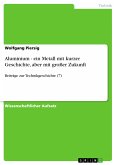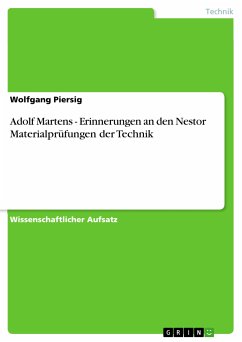Diplomarbeit aus dem Jahr 2007 im Fachbereich Werkstoffkunde, Note: 1,1, Martin-Luther-Universität Halle-Wittenberg (Technische Mechanik), Sprache: Deutsch, Abstract: English: The aim of this work was the creation of an interface which is able to transfer the results of the injection molding analysis of fibre reeinforced polymers done by Moldflow into the structural analysis program ABAQUS. The properties which depend on the degree of fibre orientation like Young's Modulus, Shear Modulus and Poisson's Ratio were not calculated by the method of "orientation averaging" but with the help of functions which were fitted to experimental data. The calculation and the transfer of all needed data like specific values, geometry, material direction and so on is done by an interface. The interface is suitable for midplane elements in Moldflow and transfers all data which are necessary for the usage of shell elements in ABAQUS. In addition a method is described how nonlinear orthotropic behavior can be modeled starting from the generalized Hooke's Law. It is shown how such behavior can be implemented in ABAQUS by means of a material subroutine. The results of this subroutine are compared to an orthotropic linear simulation. Deutsch: Das Hauptziel der Arbeit war die Nutzbarmachung der Ergebnisse der Spritzgießsimulation aus Moldflow für die Strukturanalyse durch das FEM Programm ABAQUS. Die orientierungsgradabhängigen Eigenschaften wie der E-Modul, der Schubmodul und die Querkontraktionszahlen werden in dieser Arbeit nicht mithilfe des „Orientation Averaging“, sondern mithilfe von Funktionen berechnet, die vorher an experimentelle Ergebnisse angepasst wurden. Die Berechnung und die Übertragung der Kennwerte, der Geometrie, der Materialrichtungen etc. erfolgt weitestgehend automatisch durch eine Schnittstelle. Die Schnittstelle ist vorerst nur zur Übertragung aller benötigten Daten von Mittelflächenelementen aus Moldflow auf Schalenelemente in ABAQUS geeignet. Im Rahmen dieser Arbeit wurde außerdem eine Methode entwickelt, wie sich, ausgehend vom verallgemeinerten Hookeschen Gesetz, nichtlineares, orthotropes Werkstoffverhalten für kurzfaserverstärkte Kunststoffe modellieren lässt. Es wird der Weg aufgezeigt, wie sich solches Verhalten mithilfe einer Materialsubroutine in das kommerzielle Programm ABAQUS implementieren lässt. Das nichtlineare Verhalten wird über ein zusätzliches Modell, welches die Nichtlinearität des jeweiligen Werkstoffes berücksichtigt, dargestellt. Es erfolgt der Vergleich der linear elastischen mit der nichtlinear elastischen Simulation für den technischen Kunststoff PBT-GF30.









